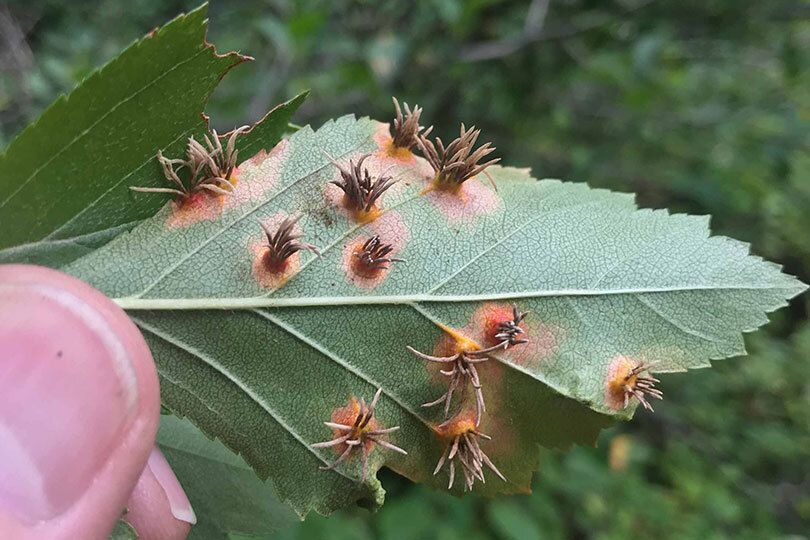We are Here to Help
The Plant Clinic can assist you with the following:
- Identify Insect Specimens
- Diagnose Disease in Plant Specimens
- Diagnose Disease in Turf
- Identify Plant & Weed Specimens
To help us help you, please pay close attention to the directions below.
To submit photos or general questions, scroll to the bottom of this page.
How To:
Preparing Insect Specimens for Identification
- Carefully collect insect specimens and/or plant material associated with insect damage.
- Bring in a generous amount of affected plant material associated with the insect.
- Place insect in alcohol, either in small bottles with secure caps or sealed plastic bags.
- For large moths and butterflies, cushion with cotton in a box or jar to minimize damage.
Preparing Plant Specimens for Disease Diagnosis
- Collect plant material showing distinct disease symptoms. Try to bring several plant parts that show the various stages of the problem: early stages, severely affected, and the healthy plant.
- When practical, dig up the entire plant (e.g. vegetables & flowers) including its root structure. Try not to pull the plant as any diseased roots will be left behind.
- Wrap roots in plastic bag separate from the rest of the plant to prevent dirt from contaminating leaves and stems.
- Tree diseases can best be diagnosed by evaluating the junction of diseased and healthy tissue. Include twigs or limbs just beginning to show symptoms, but still alive. Old dead limbs are useless.
- Make note of what percentage and what part (top, middle, or lower) of the plant is affected.
Preparing Turf Samples for Disease Diagnosis
- Cut turf in squares approximately 4 inches across and as deep as the roots will hold soil. Leave the soil intact. Store samples in fridge until ready to bring into the Plant Clinic.
- Bring three or four specimens each representing a different stage (healthy, slightly affected, heavily damaged).
- Make note of what percentage of the lawn is affected.
Preparing Plant and Weed Identification Requests
Plants/weeds are identified in many ways. The most useful plant parts are flowers, fruits, leaves, buds, and stems. Because some ornamental plants have many varieties, it may not be possible to determine the exact variety.
- Collect as many plant parts as possible. Flowers, fruits/seeds, leaves, stems, buds and roots all may aid in identification.
- Place the plant specimen in a sealed plastic bag along with a moist paper towel (don’t add water).

